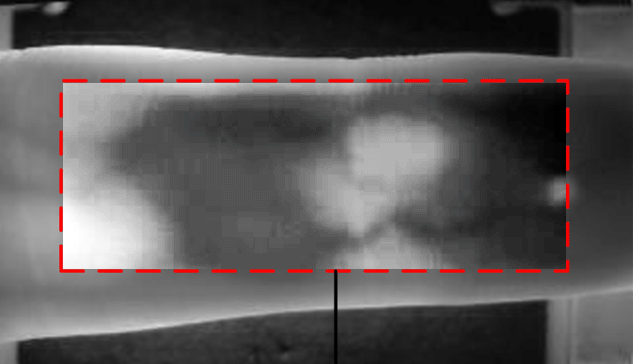Blood vessel patterns improve security

Mobile devices such as smartphones are currently protected from improper use by a password, swipe gesture and fingerprint or face recognition (with increasing levels of security). These measures alone do not provide a sufficiently high level of security. A new biometric security system is under development that combines a fingerprint pattern together with a scan of the blood vessel patterning in the finger...
Mobile devices such as smartphones are currently protected from improper use by a password, swipe gesture and fingerprint or face recognition (with increasing levels of security). These measures alone do not provide a sufficiently high level of security. A new biometric security system is under development that combines a fingerprint pattern together with a scan of the blood vessel patterning in the finger.
It’s not only your face or fingerprint that’s unique to you but also the arrangement of veins under your skin. A lot of work is being done to detect these so-called ‘venous patterns’. Wencheng Yang from the Australian ECU Security Research Institute (ECUSRI) believes that this technology can be put to practical use in the coming years. Fingerprints are better than passwords or gestures, but unless we wear gloves our fingerprints remain on items we have handled. It has been shown that miscreants can lift these prints and use them to bypass security.
Face recognition, as used by IPhone X, for example is also not generally secure. Tests show that it’s not possible to outsmart the system using photographic images, but high-resolution imagery and 3D footage etc. could eventually also outsmart this security feature – it’s just a matter of time.
This new technology uses a single sensor to detect image data of vein patterning and minutiae-based fingerprint data to provide an exponential improvement in recognition security. The two different sets of information together make it extremely difficult to circumvent this security measure. The vein patterns are recorded in the infrared, which makes it far more difficult for criminals to produce a spoofing workaround.
The article ‘A Fingerprint and Finger-vein Based Cancelable Multi-biometric System’, is published in the ‘Pattern Recognition’ journal, can be downloaded as a PDF.
It’s not only your face or fingerprint that’s unique to you but also the arrangement of veins under your skin. A lot of work is being done to detect these so-called ‘venous patterns’. Wencheng Yang from the Australian ECU Security Research Institute (ECUSRI) believes that this technology can be put to practical use in the coming years. Fingerprints are better than passwords or gestures, but unless we wear gloves our fingerprints remain on items we have handled. It has been shown that miscreants can lift these prints and use them to bypass security.
Face recognition, as used by IPhone X, for example is also not generally secure. Tests show that it’s not possible to outsmart the system using photographic images, but high-resolution imagery and 3D footage etc. could eventually also outsmart this security feature – it’s just a matter of time.
This new technology uses a single sensor to detect image data of vein patterning and minutiae-based fingerprint data to provide an exponential improvement in recognition security. The two different sets of information together make it extremely difficult to circumvent this security measure. The vein patterns are recorded in the infrared, which makes it far more difficult for criminals to produce a spoofing workaround.
The article ‘A Fingerprint and Finger-vein Based Cancelable Multi-biometric System’, is published in the ‘Pattern Recognition’ journal, can be downloaded as a PDF.
